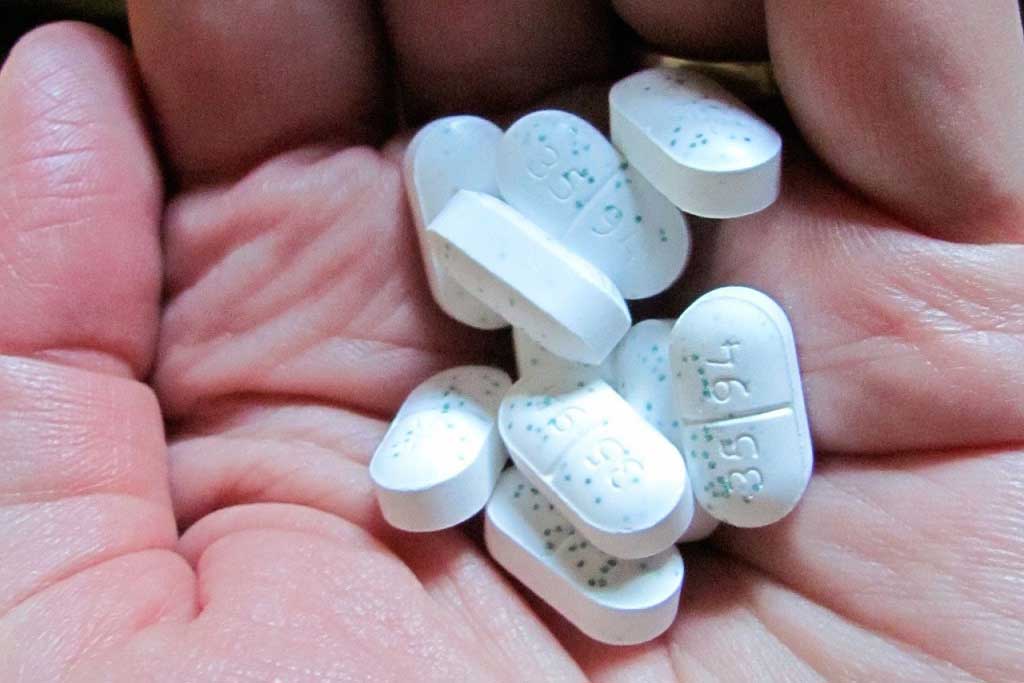Statins 'for everyone'
Older people
Cholesterol-lowering statin drugs could benefit millions more, according to several high-profile stories in today’s papers. The Daily Mail’s front-page story claimed
Cholesterol-lowering statin drugs could benefit millions more, according to several high-profile stories in today’s papers. The Daily Mail’s front-page story claimed that a new “wonder drug” can dramatically cut the risk of heart attacks and strokes “for everyone”, even those without high cholesterol.
Today’s stories refer to a large trial, paid for by a pharmaceutical company, on rosuvastatin, a statin that has been prescribed for many years. It looked at how it might benefit people with 'normal' cholesterol levels who had high blood levels of a protein linked to inflammation (known as CRP). While the results of this study are impressive (with the drug reducing relative risk of certain heart problems by 44%) it did not find benefits that might apply to everyone.
It found benefit for those with both low cholesterol levels and high levels of CRP. Previous research mentioned in the study suggests statins offer no benefits to people with normal levels cholesterol and CRP.
The study is likely to fuel further research and may well change the way doctors prescribe statins in the future.
Where did the story come from?
This study was conducted by Dr Paul Ridker, Dr Eleanor Danielson and colleagues from Harvard Medical School and several other academic and medical institutions across the USA, UK, Holland, Germany, Argentina and Denmark. The research was funded by AstraZeneca (a pharmaceutical company manufacturing rosuvastatin) and published in the New England Journal of Medicine.
What kind of scientific study was this?
This study is a randomised controlled trial investigating the effectiveness of a cholesterol-lowering statin drug, rosuvastatin (brand name Crestor), for primary prevention of cardiovascular problems (i.e. in ‘healthy’ people). The target group of people had ‘healthy’ levels of cholesterol, (not high enough for them to normally be prescribed treatment with a statin). All had high levels of a protein called high-sensitivity C-reactive protein, or CRP. The protein is a marker for inflammation, as its level increases in the blood during inflammatory processes.
Between February 2003 and December 2006 nearly 90,000 people from 26 countries were screened for enrollment. Only ‘apparently healthy’ men and women with low levels of LDL cholesterol and high levels of high-sensitivity C-reactive protein levels (2.0mg / litre or more) who had no history of cardiovascular disease could take part in the trial. Men had to be over 50 and women over 60.
People who used or had used lipid-lowering therapy, women who had had hormone replacement therapy, those with liver dysfunction, high blood pressure, diabetes, recent cancer or with a recent history of drug or alcohol abuse were also not allowed to be in the trial.
All eligible people were given a ‘run-in’ phase of four weeks (during which they received only placebo). The purpose of this part of the study was to ensure that, in the main study, only eligible people motivated to comply with treatment entered the main study.
Those who completed the four-week run in phase – 17,802 people - were then randomised to take either rosuvastatin (20mg/day) or a placebo. The intention was to follow participants up until a total of 520 ‘events’ had occurred. The study ‘events’ included heart attack, stroke, arterial revascularisation, hospitalisation for unstable angina or death from cardiovascular causes. This number of events was chosen to ensure that the study had enough statistical power to detect whether the statin was performing significantly differently from the placebo.
People re-visited their study centre at 13 weeks after randomisation, then every six months from entry into the study. During these follow-up visits, laboratory investigations were performed, pills were counted and structured interviews were carried out to find out about adverse events.
What were the results of the study?
In total 17,802 people were randomised to receive either treatment (rosuvastatin) or placebo. People were followed up for a median of 1.9 years, up to a maximum of 5 years. At the 12 month follow-up, rosuvastatin had significantly lowered LDL cholesterol, levels of CRP and triglyceride fats compared to placebo.
The study was terminated once 142 events had occurred in the statin group compared with 251 events in the placebo group. People in the rosuvastatin group had a 44% reduced risk of an event that would end their participation in the study, such as death or a heart attack.
When the researchers looked at the end points individually, statin treatment reduced fatal or nonfatal stroke, “arterial revascularisation” and unstable angina. It also reduced the combined risk of nonfatal myocardial infarction, nonfatal stroke, or death from cardiovascular causes. Reductions in risk were similar in men and women.
Participants at both low and high risk benefitted equally. There were also similar numbers of adverse events in placebo and treatment groups.
What interpretations did the researchers draw from these results?
The researchers conclude that rosuvastatin significantly reduced the occurrence of major cardiovascular events in people without high blood lipids (hyperlipidemia) but with elevated levels of high-sensitivity C-reactive protein levels.
What does the NHS Knowledge Service make of this study?
This large trial was well conducted and analysed, and there is confidence in the strength of its findings. It has shown that rosuvastatin (a statin drug manufactured by AstraZeneca and used to treat high blood cholesterol) reduces incidence of cardiovascular events in men and women who are ‘well below the threshold for treatment according to current prevention guidelines’.
The drug also reduced the outcome of ‘all cause mortality’, which importantly shows that the treatment is not reducing deaths due to cardiovascular problems while increasing deaths from other causes.
It is important to note that while participants were ‘lower risk’ in terms of their cholesterol levels, they were still not 100% healthy. Everyone in this study had an elevated level of high-sensitivity C-reactive protein, which increases the risk of cardiovascular events and is a marker for disease and inflammation.
Another important point is the length of follow up, with the trial being stopped earlier than originally intended. The trial was halted after 393 events rather than 520, as the risk reduction had become so statistically significant that the study did not warrant completion.
By the time the study ended, people had been taking the statin for a median average of 1.9 years. This is a short follow up time and the researchers acknowledge that they cannot rule out the fact that during longer courses of treatment with rosuvastatin, there could be more significant adverse effects.
It also remains unclear what the longer term effects of treatment would be (i.e. whether the benefits seen in the short term would be sustained). They noted a ‘small but significant’ increase in the rate of physician reported diabetes and increases in blood glucose with statin treatment, and say that these need further study.
While this study does not show the universal benefits reported in some news sources it could change the way statins are prescribed in the future, and will lead to future research.






 Subscribe
Subscribe Ask the doctor
Ask the doctor Rate this article
Rate this article Find products
Find products








